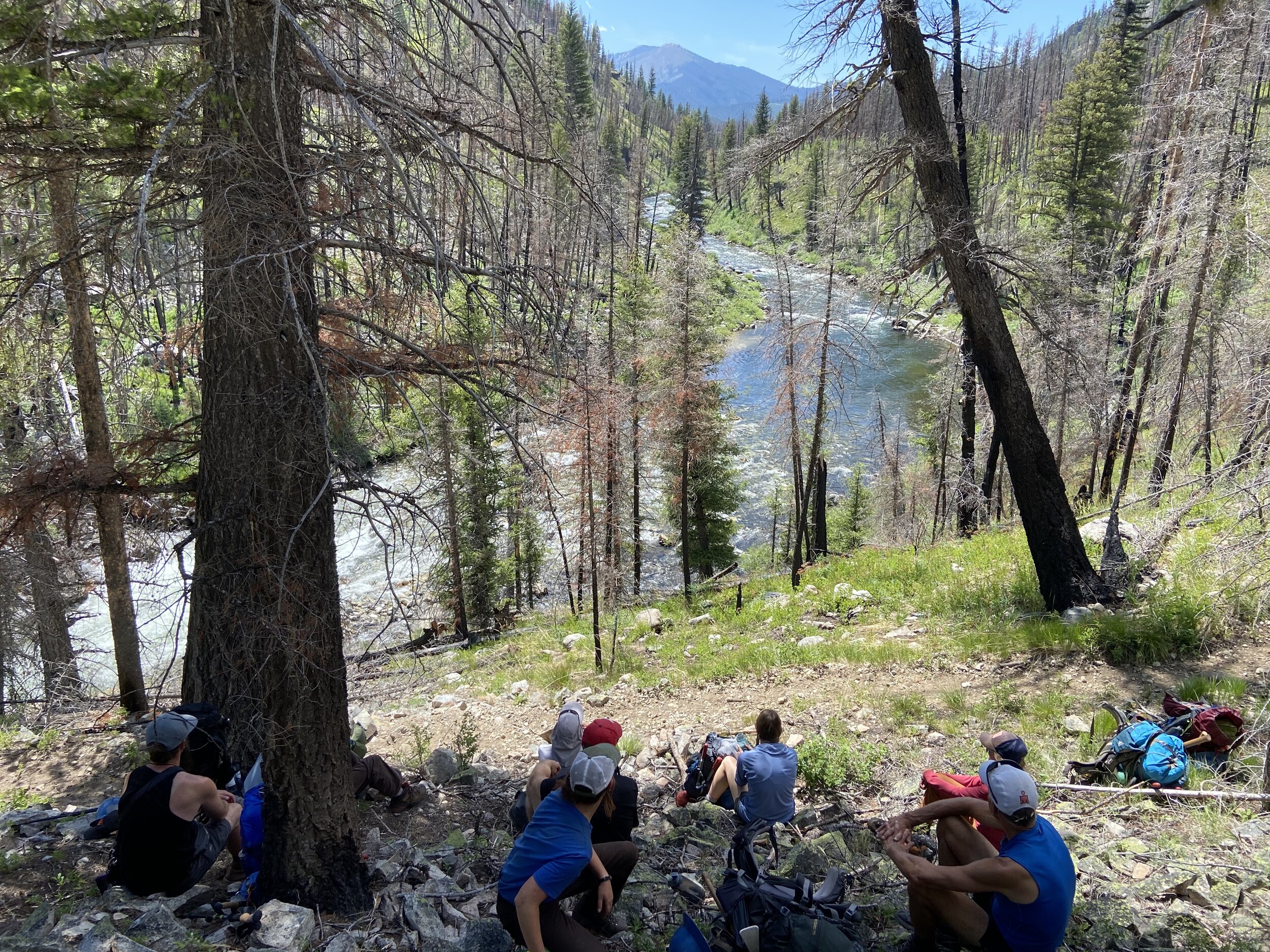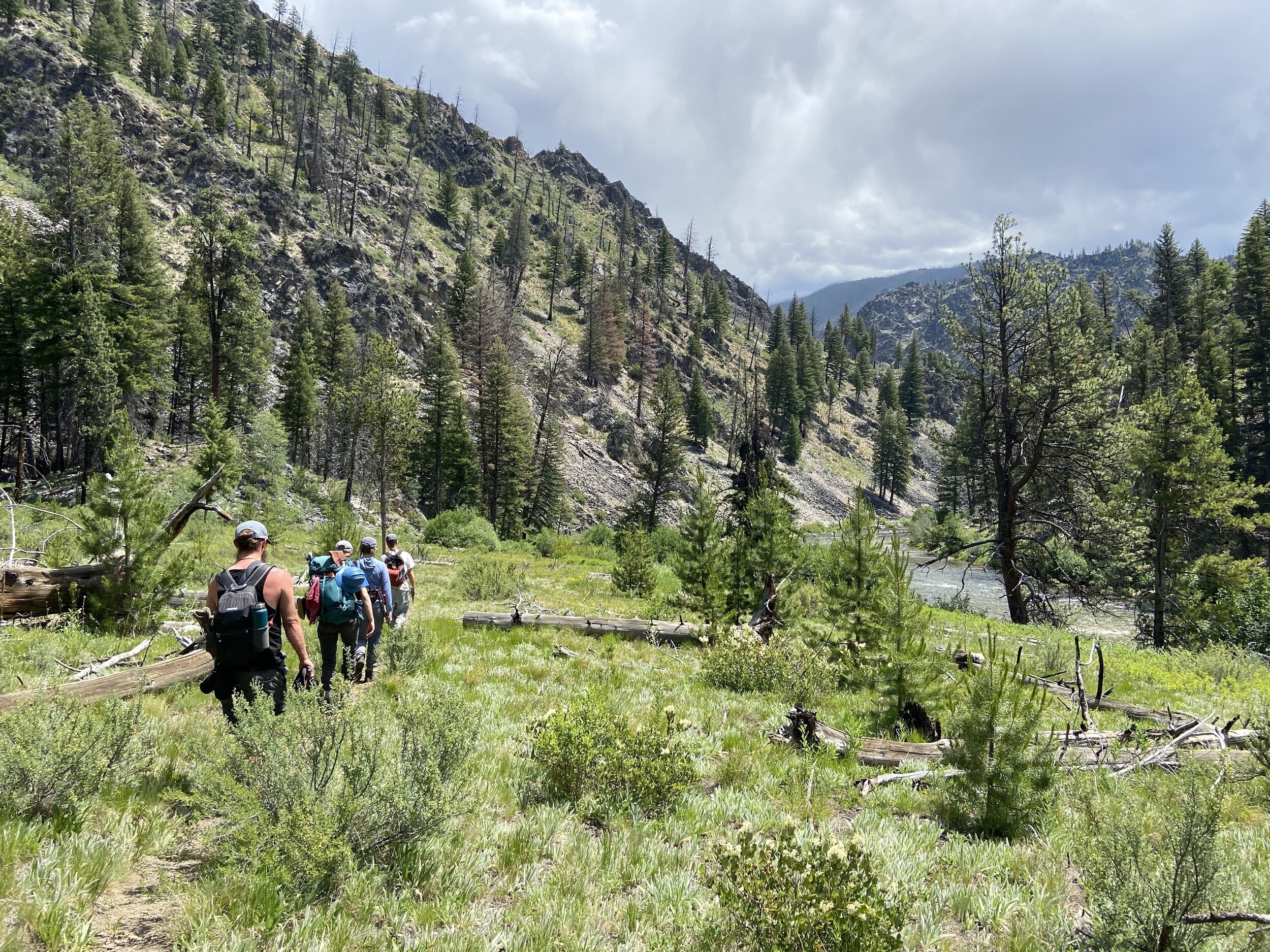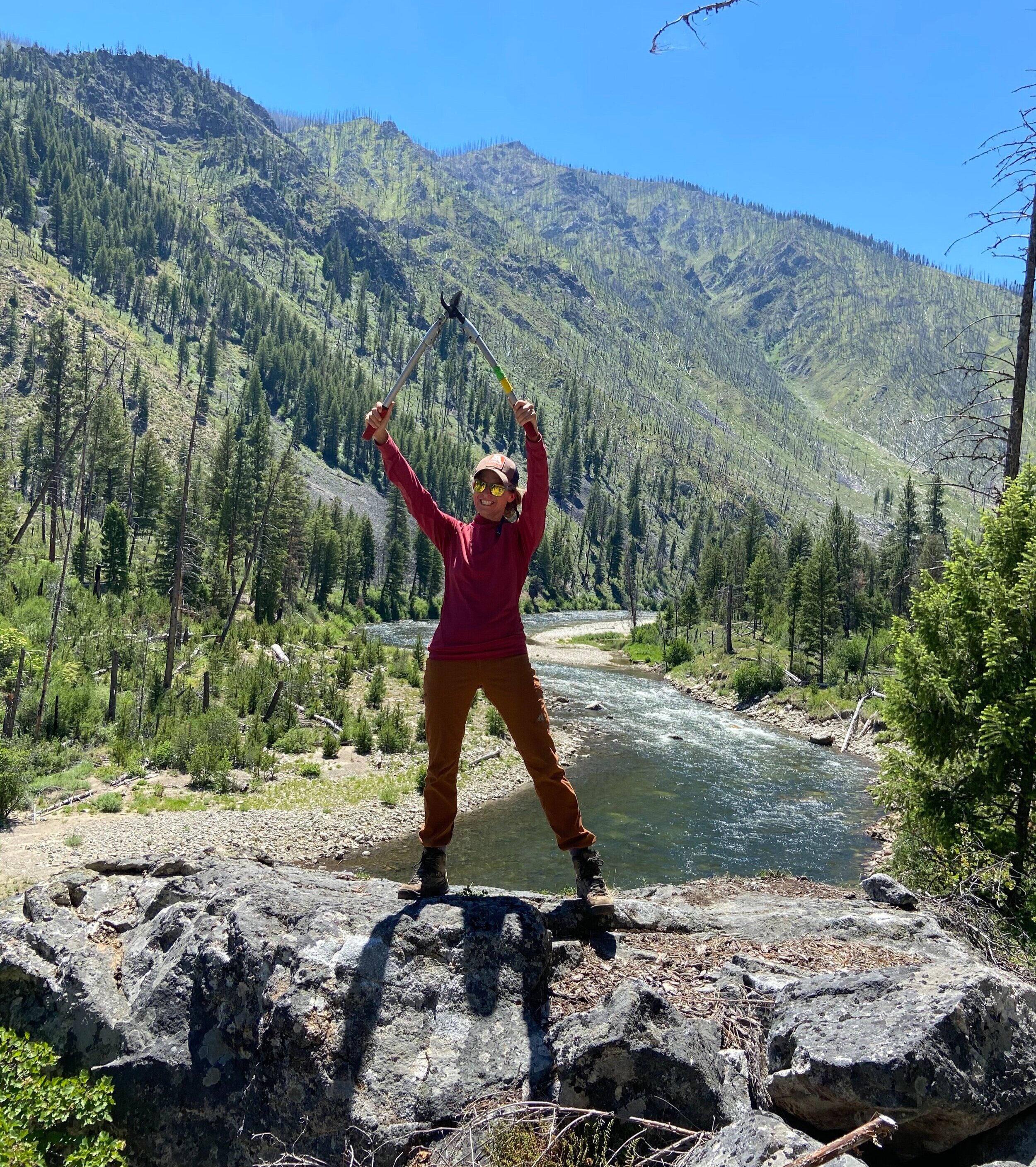Jaime Breisch
Wilderness Ranger Fellow
Monumental Creek Trail #062 | Marble Creek Trail #005
Payette National Forest | Frank Church River of No Return Wilderness
June 11–16, 2021
It’s the first day of the first hitch and I’m nervous about keeping up. We’ve been in and out of our cars all day, removing trees blocking the road and digging ourselves out of snow drifts as we try to make it to our trail head. This isn’t our job but an obstacle to get there and we’ll do what needs to be done.
Our gear is clean and new. Our tools are sharp and shiny.
Monica Stapleton (left) and Parker DePond (right) enjoying the view just past Monumental Summit. After digging Monica's truck out of a snowdrift, we decided to take lunch and wait for the snow to melt more.
Jaime Breisch using her broken middle finger to give the log that broke her finger a piece of her mind.
June 22–30, 2021
It’s the second day of the second hitch and my finger is nothing but pain. It rises and ebbs, throbbing with every jolt of the truck. It’s been a long day of driving, but I’m in good company—the best company—and they’ve helped me be brave. Stopping for dinner put us in good spirits but by the time we’ve made the five-hour drive back, sleep is pulling at our eyes.
It’s after dark. Our tents are still standing; our tools are all dusty.
Jaime Breisch (left) and Parker DePond (right) posing in front of Marble Creek Trailhead (Trail #062) about to head out on their third hitch. Marble Creek is a trail adopted by SBFC and a section of the Idaho Centennial Trail.
July 6–14, 2021
It’s the third day of the third hitch and I’m dreading the hike out—specifically the three steep miles uphill. Smoke has filled the air in thick wafts; we don’t know which fire it’s blowing from. Our bear hangs dangle on the other side of the creek we’re camped next to. Crossing to get our food bags is miserable. The water is frigid, and I want to scream once I’m on the other side. While excruciating, the icy cold is a balm to my blisters. I’ve decided I will be doing this for our entire time here. I’m willing to save my team some early morning agony.
Our gear is covered in pollen. There are streaks of dirt on our packs. Loppers are tearing where they should be cutting. Our saws are becoming hard to pull.
July 21–29, 2021
It’s the fourth day of the fourth hitch and I have yet to find more happiness and joy on a hitch. The waters are cold and refreshing. The views, although nothing spectacular, fill me with a sense of delight. Wild raspberries flourish around every turn. Although they are small, they hold such sweetness—of sunshine and fresh air and wildness. Not even the ash I find on my tent dampers my mood. My love for my crew—small, sure, but so wonderful and hardworking—reaches new levels as we continue to grow close. Boundaries have all but disappeared as we ask each other random, sometimes downright invasive questions. I want to make them laugh. I want to make them smile. I love thinking of new things to surprise them with.
Our tents are grimy. Our packs are filthy. Our boots—oof—are rank. Our tools continue to dull as our hands wield them with confidence and purpose.
Image depicting our Pulaski in a burned tree. The background shows the smoke that kept us company during our time up on Monumental Creek Trail (Trail #005).
Our camp for our hitch on Monumental Creek Trail (Trail #005). There were a few mornings we awoke to ash on our tents.
August 3–11, 2021
The fifth day of the fifth hitch is yet to come. Fires threaten our work from seemingly every direction. Smoke chokes us out. There’s a sweet sorrow in my heart just thinking of the summer coming to an end so quickly. Where did the time go? I have loved and hated my time here, but it’s a time I wont ever forget. Soon, I’ll be cleaning my gear. We’ll sharpen blades and replace saws and return them to the tool cache for next seasons’ crews to use.
Our gear will be dirty. Our tools will be the dullest they’ve been all summer.
I wouldn’t have it any other way.
Jaime Breisch hiking with the crosscut at Monumental Creek Trail (Trail #005).
Payette National Forest | Frank Church-River of No Return Wilderness
University of Montana
Major: Parks, Tourism, and Recreation Management | Minor: Wilderness Studies
Jaime is from a military family, and eventually settled in Arlington, Washington. She grew up going on long camping trips and has always had an appreciation for wilderness and national forests. Jaime has experience working on campgrounds, and she is looking forward to working more directly with conservation and protecting our public lands, particularly in wilderness areas. Jaime is enamored with how off-the-grid one can get in Wilderness; especially how it disconnects her from technology. Jaime can be found hiking, backpacking, and canoeing in the summer and cross-country skiing in the winter.























































